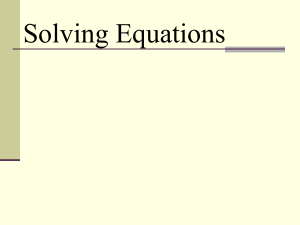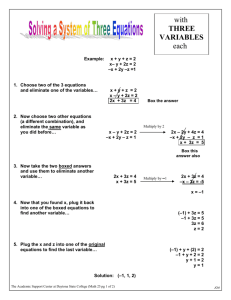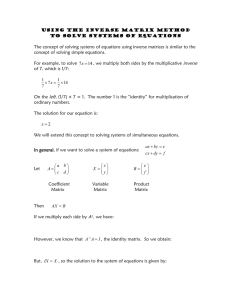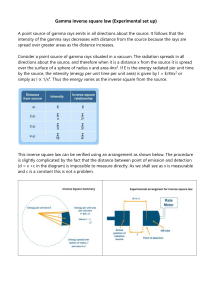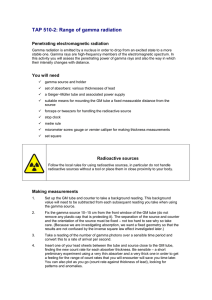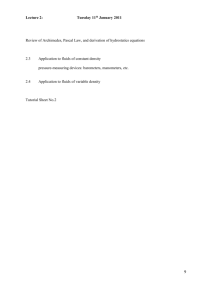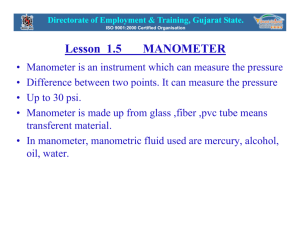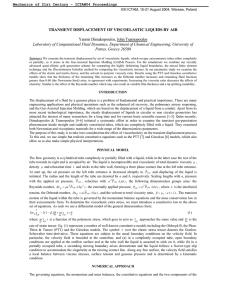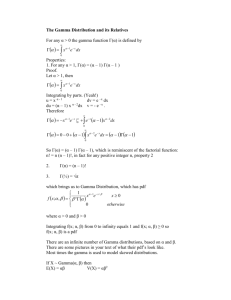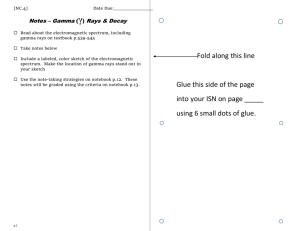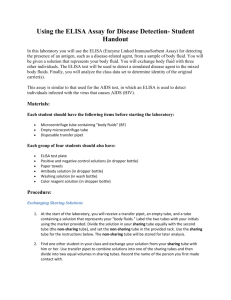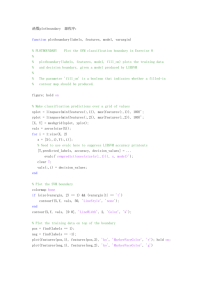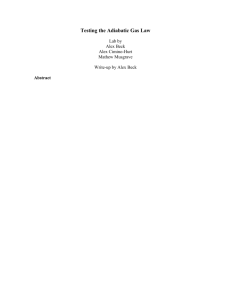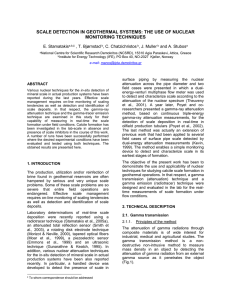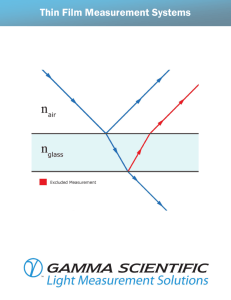Formulas and assumptions blog
advertisement
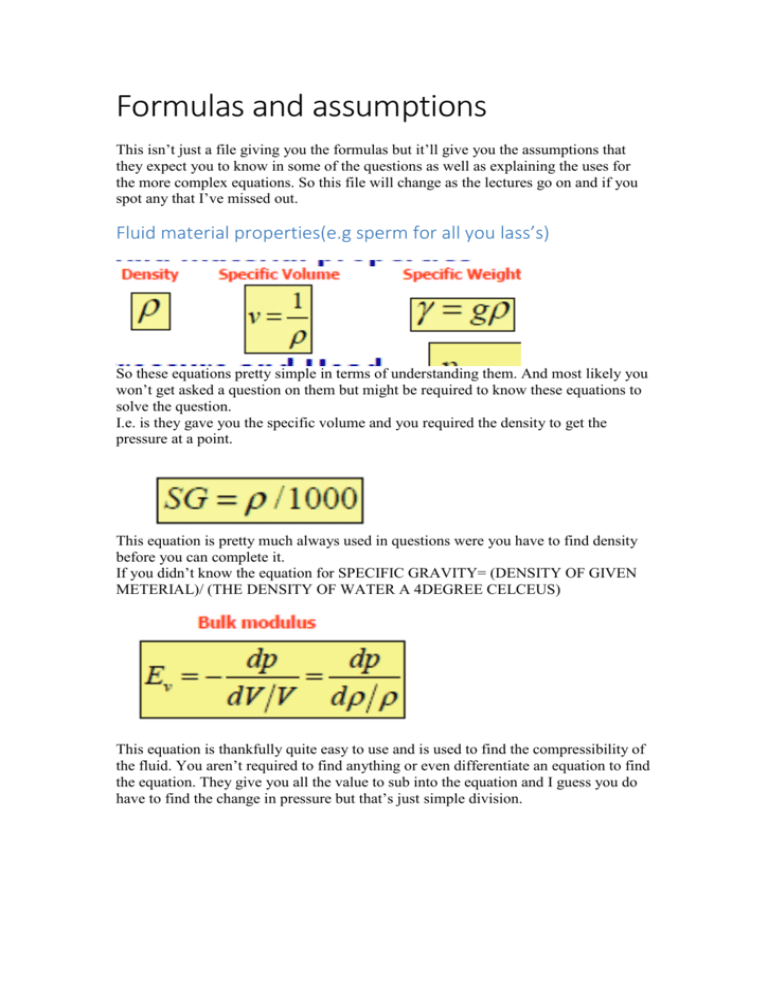
Formulas and assumptions This isn’t just a file giving you the formulas but it’ll give you the assumptions that they expect you to know in some of the questions as well as explaining the uses for the more complex equations. So this file will change as the lectures go on and if you spot any that I’ve missed out. Fluid material properties(e.g sperm for all you lass’s) So these equations pretty simple in terms of understanding them. And most likely you won’t get asked a question on them but might be required to know these equations to solve the question. I.e. is they gave you the specific volume and you required the density to get the pressure at a point. This equation is pretty much always used in questions were you have to find density before you can complete it. If you didn’t know the equation for SPECIFIC GRAVITY= (DENSITY OF GIVEN METERIAL)/ (THE DENSITY OF WATER A 4DEGREE CELCEUS) This equation is thankfully quite easy to use and is used to find the compressibility of the fluid. You aren’t required to find anything or even differentiate an equation to find the equation. They give you all the value to sub into the equation and I guess you do have to find the change in pressure but that’s just simple division. Pressures of head, oops I mean pressure and head!! This equation is used to find the pressure down a height of a certain fluid. Simply just put in the numbers they give you in the question and get all your marks. While this equation looks simple, as we all know it’s useless unless you know how to apply it. So yet again we see gamma which is just density multiplied by the acceleration due to gravity. But this time it’s multiplied by a given height in the tube. Now the height won’t always be from the surface to the centre of the piezo tube Manometer. It would theoretically be the height anywhere on the tube meaning they could ask you a question to mind the height of the water at given points after making you find the pressure at that point. This equation as you probably know or have noticed by now is just to work out the pressure between 2 points in a liquid in the manometer. Since the liquids are assumed the same in this equation you only require I gamma number. And you simply multiply that by the difference in heights of the 2 pressures. Obviously this gets more complicated if you have more than 1 liquid and/or gas. Then you would require 2 different types of gamma. You would use the gammas to find the 2 pressures and then just take them away from each other. Simples (insert meerkat noise). Now they could give the tube an angle but lets be honest it’s still an easy question. You’re still interested in the vertical height of the liquid so if we know the length of the tube then we simply just do the length multiplied by the sin of the angle. Then just multiply by the gamma of the fluid. Forces on a plain surface well this equation is basically just saying that the resultant force is = to the height from the surface to the centre of the multiplied by the gamma of the water and the area of the surface.it really is just as simple as that (mainly because we don’t have to derive this Bull Shit) Thank god you don’t need to derive this. But this equation is super easy to use because it’ll give you all the values you need like Ixc for example in the equation sheet. Just take the equations for it. Sub numbers in. and simply solve it. Usually the question will want you to find the moment so you’ll probably end up having to multiply this value by FR. But that’s simple enough.



